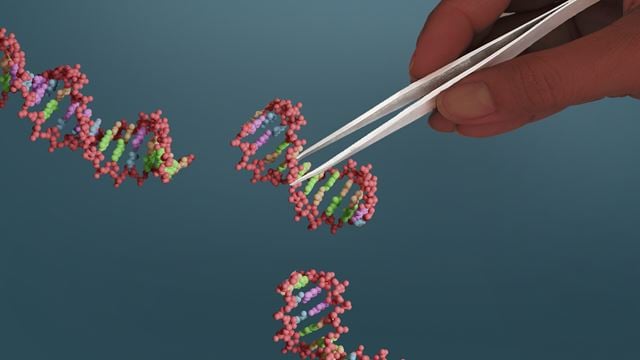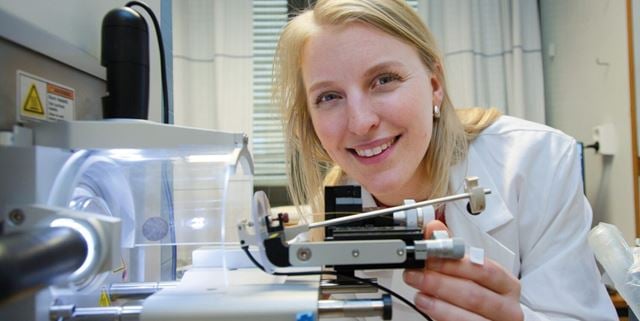The opinions expressed in this article are those of the authors alone. The article was first published on the online opinions website NRK Ytring and is reproduced here with the permission of the broadcasters NRK.
The automatic transformation of text to video is a fascinating process but is also incredibly energy-demanding. We believe that this in itself lends further support for the introduction of a licensing system for data centres, as is currently being proposed by some Norwegian politicians.
Imagine that you want to fully recharge your mobile phone from zero, and that 1,800 other people want to do the same. This is about the same as the population of the small town of Vardø in Finnmark.
At the same time, a data centre operated by the tech giant Open AI in the US is in the process of transforming the phrase “man walking his dog” into a 60-second video with the aid of artificial intelligence (AI).
Who do you think is using the most electricity?
Educating the public about AI and energy consumption
What we know is that a data centre consumes as much electricity when it enables ChatGPT to create a high-resolution image as you use to charge your mobile phone from zero.
But how much energy does it take to transform a text string not into a static image, but into a video? Open AI, which is the company behind ChatGPT, has recently launched a breakthrough technology called Sora that does exactly this.
As researchers into artificial intelligence, we believe that the time has come to educate the public about the issue of AI and energy consumption.
At present, we still don’t know exactly how much electricity Sora uses to perform its calculations. But we can make an inference. We know that the creation of a single, static AI-generated image requires the same volume of electricity as you need to charge your phone. A 60-second video generated by Sora requires 1,800 such images.
Same as 20 panel heaters
Therefore, we believe that when Sora generates a 60-second video, it is not unreasonable to suggest that it is consuming at least as much electricity as you and all the other 1,799 subscribers are using to charge your phones.
Or, to put it another way, as much electricity as is needed to keep twenty 1000-Watt panel heaters running for an hour.
And that’s not all. Enormous volumes of computing power have been dedicated simply to the training of the AI models used to create the videos, although this is not taken into account in our inferred calculation.
We need a licensing system
Sora is as yet not available to the general public. When this happens, its users will be extracting massive volumes of electricity from data centres all across the world – to the detriment of our other energy needs and natural ecosystems.
This situation supports the relevance of a proposal put forward by the Norwegian Socialist Left (SV) party that Norway should introduce a licensing system for data centres in an attempt to gain some control over electricity consumption. One of the party’s arguments is that such a system can be used to reject the establishment of data centres that want to use electricity for no other reason than to mine cryptocurrencies.
In our opinion, an ability to say no to centres that are planning to extract electricity simply to create a video playground is another valid reason for introducing a licensing system.
Data centres are moving in on the Norwegian distribution grid
The background for the SV proposal is that we are seeing massive data centres muscling their way into the Norwegian distribution grid and at the same time damaging our natural ecosystems. The AI systems operated by OpenAI are housed in gigantic data centres just like those that Google is planning to build in Skien in Telemark. Similar centres are also being planned in the counties of Troms and Nordland, as well as in Oslo and in Hamar in Innlandet county.
Artificial intelligence isn’t just one thing – it is many. Some AI models require a great deal of electricity, others much less. In fact, we can divide AI tools into two main categories:
- Specialist AI models that can address clearly defined tasks such as the identification of bone fractures in X-ray images or the improvement of wastewater cleansing processes. Such models do not necessarily require a great deal of computing power.
- Generalist AI models, such as ChatGPT and Sora, that are designed to offer us answers to anything and everything. They incorporate extremely large datasets and thus require massive computing power. They need massive volumes of electricity simply to create images. Each individual pixel (picture element) in a colour image is made up of three digits that determine the actual colour. An enormous number of calculations are required in order to ensure that each pixel acquires the correct colour.
A race for influence?
We believe that because different AI systems consume different levels of electricity, it is important that the public are made aware of exactly what this entails. Especially in the light of statements being made by big tech CEOs whose voices are the loudest and most publicised when it comes to global AI development.
From the sidelines it may seem that a race is in progress to build the largest and most powerful AI models – with the ultimate goal of winning the maximum level of influence in our daily lives.
OpenAI CEO Sam Altman is just one of these visionary tech executives. He makes no secret of the fact that the development he wants to see will require a cataclysmic breakthrough in the field of energy.
Our advice to the politicians
The question of what are possible and desirable developments in the field of AI will be one of the biggest issues facing us in the years ahead. We believe that it is essential to view this in the context of the other major challenges facing society, such as the climate change crisis.
Hopefully, AI will be able to make a constructive contribution towards addressing climate change, not least by helping us to rationalise energy-demanding processes and identify innovative technological solutions. If this is to happen, we need to focus on the small, specialist models – not the massive generalist systems.
We argue that Norwegian politicians should not be sponsoring the race for influence by uncritically giving the tech companies unrestricted access to the energy they claim they need. Licences should be introduced and granted to data centres strictly on the basis of the benefits they offer to society.





